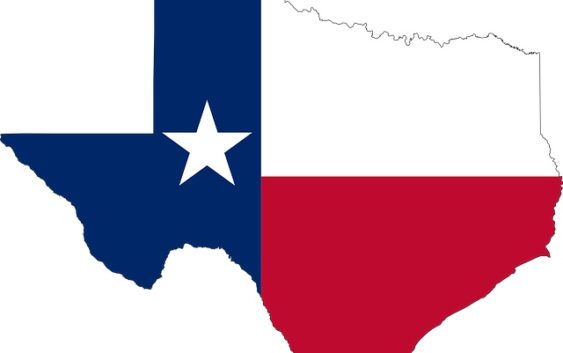- Fake job seekers are flooding the market, thanks to AI
- One set of evacuation orders lifted in Caldwell County after wildfire contained
- 'We gutted every building' | Chimney Rock rebuilding after Hurricane Helene
- 'We gutted every building' | Chimney Rock rebuilding after Hurricane Helene
- Debris from Hurricane Helene provides fuel, complicates containment for spring wildfires
Hurricane Laura Approaches Gulf Coast

9(MDAzNzkxNjc1MDEyNDg3MDQ2NDA1MTkxZQ004))
AILSA CHANG, HOST:
Hurricane Laura has exploded into a very powerful Category 4 storm with winds now reaching 145 miles per hour, which makes it an extremely dangerous storm system. It is expected to make landfall around midnight along the Sabine River that divides Texas and Louisiana. Forecasters are warning of a life-threatening storm surge of up to 20 feet. This is the first major hurricane of this busy storm season. NPR’s John Burnett is on the line with us from Beaumont, Texas, which is not far from the expected landfall.
Hey, John.
JOHN BURNETT, BYLINE: Hi, Ailsa.
CHANG: All right. So bring us up to speed here. What are you seeing?
BURNETT: Well, if you look at the radar, the (inaudible) is just a monster. The hurricane winds are 120 miles (inaudible). Storm force winds go out 400 miles across, and it’s roaring toward an area on the coast of Upper Texas and southwest Louisiana that not only is home to (inaudible), but it has huge refineries and petrochemical complexes. They’ve all shut down and locked the gates.
CHANG: And what are officials there saying about what they think the greatest dangers are going to be of Hurricane Laura at this point?
BURNETT: Well, take your pick. A wind of 120 miles an hour will tear off your roof and snap these big longleaf pine trees like a matchstick. And there’s always the threat of tornadoes when these powerful rotating storms come ashore. And then you’ll have the storm tide. Here on the Texas coast, they’re predicting 10 to 15 feet, which could be taller than a house.
CHANG: Wow.
BURNETT: It will be worse over in Louisiana where they’re on the dirty side of the storm – could be 20 feet of water coming into Cameron Parish and Lake Charles. Here’s Texas Gov. Greg Abbott earlier today.
(SOUNDBITE OF ARCHIVED RECORDING)
GREG ABBOTT: This has been categorized repeatedly as an unsurvivable (ph) storm surge. And the concern is that maybe the people in those areas are not fully aware about the severe danger where the hurricane will come across the shoreline.
CHANG: Are people even prepared? I mean, what are you seeing out there in southeast Texas?
BURNETT: Well, every city down here in the strike zone – you know, Lake Charles in Louisiana, Port Arthur, Beaumont here in Texas – have issued mandatory evacuations. Inland cities like San Antonio and Austin are receiving busloads of evacuees, but they’re being urged to stay in hotels. Nobody wants them in crowded shelters where they could catch the coronavirus.
CHANG: Right.
BURNETT: And I can tell you I drove over from New Orleans this morning and passed a steady stream of pickups and minivans hightailing it out of here to higher ground. People have definitely got the message, Ailsa. I met Curtis Holland on his driveway in Vidor, Texas, packing his Volvo with his white Labrador Casper.
CURTIS HOLLAND: I’m one of those last-minute – I wanted to stick around, but it don’t make no sense right now. When it was two and three, I was – nah, I’m fixed up – got everything put up and fixed up, you know? And – but then when they said Category 4 and the wind, I just thought, man, that’s downed power lines. And anyway, I didn’t want to fool with it.
BURNETT: I also met Charlie Halpain, a resourceful guy who was running around town, screwing plywood on storefronts for 25 bucks a sheet.
CHARLIE HALPAIN: Yeah, we’re boarding up this one, and we got another one in Beaumont we boarded up and got one across the street and got another one down the road.
BURNETT: What about you and your family – getting out of town?
HALPAIN: Oh, yeah. We’re going to board up, and we’re gone – going up North somewhere, anywhere out of the storm surge.
BURNETT: With a storm this powerful, that storm surge could go up in the waterways 30 miles inland. And the tropical storm force winds could reach all the way to Longview, which is 200 miles north of here.
CHANG: I mean, people there have quite a lot of experience with these kinds of storms, right?
BURNETT: They do. Beaumont has had terrible flooding in recent years. There was Hurricane Harvey three years ago. There was Tropical Depression Imelda last September, bad wind damage with Hurricane Rita. If there’s any good news, it’s that this is a fast-moving hurricane.
CHANG: Right.
BURNETT: So the wind will hopefully be past us, and the water should recede.
CHANG: That is NPR’s John Burnett in Beaumont, Texas.
Thank you, John.
BURNETT: You’re sure welcome, Ailsa. Transcript provided by NPR, Copyright NPR.